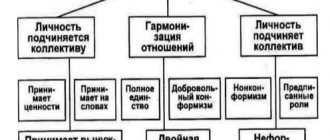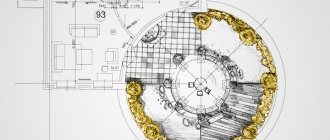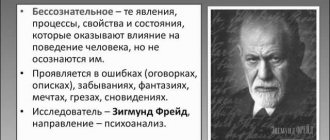Synectics is a form of searching for new ideas through the construction of analogies. Author - W. Gordon (USA, 1952). Synectics is an advanced brainstorming method based on the principle of “making the known strange and the strange known.”
Synectics is the process of searching and creating new associative connections. Synectics is a cocktail of logic, facts, imagination, analysis and synthesis.
The synectics method, like other methods of associative search for ideas, is based on the ability of the human brain to establish connections between words, concepts, feelings, thoughts, impressions. This leads to the fact that a single word, observation, etc. can cause in the mind the reproduction of previously experienced thoughts, perceptions and “turn on” rich information from past experience to solve the task.
Types of analogies
Direct analogy
An example of a direct analogy in LEGO advertising
Direct analogy - we are looking for similar solutions, business ideas, looking for similar facts in different industries, comparing and researching. Most often, comparisons are made with biological systems (plants, trees) and technical systems (vehicles, aircraft). To work well with this analogy, people with diverse knowledge are required, prone to systematic analysis of tasks and problems, who easily go beyond their professional boundaries.
Personal (subjective) analogy
Personal (subjective) analogy
Personal (subjective) analogy - imagine yourself as what is being discussed in the problem. Subject, phenomenon, problem. For example, you can imagine yourself as an advertised product and try to describe “your” capabilities and sensations. To work with this analogy, the synector needs good imagination; the ability to transform will be an advantage. The important thing is to “get used to” the role, become part of the problem under consideration, and then kill your rational censor, who usually whispers blocking nonsense in your ear. Express something that defies logic and rational reasoning.
Symbolic analogy
Symbolic analogy in Snickers advertising
Symbolic analogy is the search for paradoxes and contradictions in the familiar and understandable. The sinector must understand and describe the very essence of the phenomenon, then find the opposite of this phenomenon, discover what these phenomena have in common and... briefly, in one or two phrases (sometimes completely illogical and strange), describe the connection between these phenomena. Comparisons, allegories, and metaphors can be used here, where the properties of one thing are identified with the properties of another.
Fantastic analogy
A fantastic analogy allows you to come up with the most unusual images. In a nutshell - you describe the desired result and at the same time do not take into account any objective laws of reality, you give free rein to your imagination. You just need to turn on your imagination and imaginative thinking to the maximum, and everything will work out!
Fantastic analogy
Adobe Instagram - a selection of works that can surprise you
Main stages of work
Stage 1
First, a group of specialists is selected - the so-called “development department”. It should consist of 2-3 people who are specialists invited from outside and representing different scientific disciplines, areas of knowledge or professions; and 2-3 people who are members of the main team for whom the work is being carried out. Specialists should be selected based on a combination of their knowledge, flexibility of thinking, diversity of practical experience, age and psychological type (it is better that everyone has a different one). The group must be located in a separate room. For its operation, all necessary conditions must be created: the room must be equipped with the required equipment, it must have a marker board, markers, paper, pens, etc.
Stage 2
The group should be given the opportunity to conduct a test session on the use of analogies to “warm up” all participants and train their creative skills. Synectists must discuss the analogies found in order to analyze the creative process and understand the progress of finding solutions to the problem.
Next, the four types of analogies presented above (direct, personal, symbolic, fantastic) are put into action. They are fundamental because can capture the experiences, knowledge and thoughts of all group members. It is important that each member of the group overcome their fear and boldly express their most unusual thoughts. To do this, you need to first familiarize participants with the work of experienced synectics, showing, for example, a video recording of the synectics method in action.
Stage 3
At this stage, the problem is directly solved, which also consists of several components:
- Formulation of the main problem (so that all participants clearly understand the problem that needs to be solved);
- Discussion of possible solutions and discarding ineffective ones (allows you to reduce time to solve a problem and not waste energy and creativity on unnecessary ideas);
- Search for analogies that can allow you to express the task in terms of concepts that are familiar and familiar to each member of the group (so each participant will be able to put forward their own proposals);
- Identification of all kinds of problems and difficulties that create obstacles to solving the problem (allows you to eliminate emerging obstacles and come to a solution in the shortest way);
- Asking leading questions and “working through” each of them (clarification and specification of the solution).
If the analogies become too abstract, the discussion of the problem is moved into a direction that is more understandable to everyone. And when at least one promising idea appears, it needs to be developed until the moment when it becomes applicable in practice.
Often, analogies allow you to transform familiar ideas into unusual ones, which increases the likelihood of finding a solution to a given problem, and also contributes to the fact that the knowledge and experience that participants already have can be used in the very process of finding this solution.
Stage 4
If a solution to the problem was found and turned out to be effective, then the group of synectics is invited to search for solutions to other problems that are relevant for this team at the moment. Conditions and time frames for this stage are discussed separately.
What's the plan of action?
The concept of “analogy” includes four fundamental types of this method of solving problems: direct, symbolic, subjective and fantastic analogies, each of which covers the experience and thoughts of people.
Each of these types has its own rules for searching for analogies.
They become more obvious if we introduce the following classification:
- Direct - real.
- Symbolic – abstract.
- Subjective - bodily.
- Fantastic - unreal.
Simple analogies imply a conclusion during which, based on the similarity of two objects in some characteristics, they conclude about their similarities in others. They are used in the classification of a number of objects. Complex analogies are conclusions that are made based on a set of characteristics of objects through various inferences.
Main differences from brainstorming
There are two of them. Synectors do not put forward complete ideas, but limit themselves to associations, analogies, images, metaphors, comparisons and descriptions of sensations - once. Unlike classic brainstorming, when using synectics, two criticisms are allowed. These two differences together allow you to improve, change or abandon the ideas expressed.
At the initial stage of the synectics method, analogies are used to most clearly identify and assimilate the essence of the problem being solved by participants. It is necessary to abandon obvious solutions. Then, in the process of a specially organized discussion, the main difficulties and contradictions that impede the solution are identified. New formulations of the problem are developed and goals are defined.
In the future, with the help of special questions that evoke analogies, ideas and solutions are searched for. The resulting solutions are evaluated and verified. If necessary, a return to the problem occurs to re-discuss it and develop previously obtained ideas.
Formation of a synectic team
The process of forming a group of synectors includes three phases:
- The first is the selection of group members. Special tests are used, attention is paid to the presence of a variety of knowledge, general erudition, a sufficient level of education, experience in experimental activities and flexibility of thinking. Synectors are chosen from people of different professions and preferably with two incompatible specialties, for example, a physician-physicist, an economist-engineer or a musician-chemist.
- The second phase of forming a group of synectors is their training. In Russia, the synectics method has not taken root (there are no own educational and methodological developments, and existing world experience is rarely ignored), but in the West, both small companies and large corporations spend a lot of money on training their specialists in special institutions. For example, in the USA, the training of synectic groups lasts about a year and consists of full-time and correspondence sessions. The first ones are carried out in training centers, and then the students undergo practical training in their companies, solving theoretical and real problems.
- The final phase is the introduction of the group into a real environment. A company that has sent its specialists for training or has ordered a ready-made team (this can be a one-time or regular collaboration) receives it under certain conditions to work on its own projects.
The history of the development of synectics shows that the application of creative thinking in enterprises and the use of special units increases the likelihood of success in the field of problem setting and problem solving, demonstrating the effect of synergy.
What are the special conditions created for the synectic procedure:
- Mandatory initial abstraction of participants from problems and tasks.
- Restraint of opinions and refusal to make final conclusions.
- Naturalness and ease in discussions, a predisposition to play out and simulate the situation.
- Manifestation of rationality in judgments.
As we see, rationality appears only at the final stage of the synectic procedure. Before this, images, metaphors and analogies are used.
Example
W. J. J. Gordon used this strategy to develop Pringles. The company was faced with the task of creating new potato chips and packaging that would be more efficient and would not require filling the bag with more air than the volume of the chips themselves. The paradox was that the chips should be packaged more compactly and not break. The "book title" that captures the essence of this paradox was "Compact Indestructibility." As an analogy, they chose to place fallen leaves in a bag in the fall. When you try to stuff dry leaves into a plastic bag, you face certain difficulties. But when the leaves are raw (a unique feature), they are soft and easily change shape. A wet leaf takes the shape of the adjacent leaf, leaving only a little air between them. Wetting and molding dry potato flour solved the packaging problem and gave birth to Pringles. Several years ago, I gave a seminar to a group of engineers who worked in a foundry where they sandblasted forged metal parts. They used sand to clean the parts, but it got into the cavities and it took a lot of time and money to remove it. The paradox is that in order to clean parts, the particles must be hard and at the same time not hard so that they can be easily removed. The “book title” “Vanishing Hardness” was used to describe the essence of the problem. This led them to think of ice as an analogy. The unique thing about ice is that it melts. The solution to the problem was the production of particles from dry ice. The solid particles will clean the parts and then turn into gas and evaporate.
Michael Mikalko, Mind Games. Training for creative thinking, St. Petersburg, “Peter”, 2007, p. 302.
Deduction
It has just been said that deduction is characterized by the presence of a strict logical sequence between the premises and the conclusion. What does this mean? First of all, it must be said that this is a formal relation - in the sense that it refers to the logical forms of premises and conclusion. Logicians have discovered that there are such combinations of logical forms of premises and conclusion that, given the logical truth of the premises, it is impossible for the conclusion to be false. This was called the relation of logical consequence. It is important to remember that in this case we are talking specifically about the logical, and not the factual, truth of statements. We have already encountered logical consequence using the example of the correct modes of syllogisms. The mode of the first figure Barbara is correct regardless of what exactly we substitute in place of the subject, predicate and middle term, that is, in it the premises and conclusion are connected by the relation of logical implication. Another thing is that if we take false premises, then, of course, the conclusion will be false, but the mode itself is not to blame for this: given the actual truth of the premises, it always guarantees the truth of the conclusion, simply due to a certain combination of the logical forms of statements included in it.
Further, deductive reasoning, in turn, can be direct or indirect. Again, all the inferences we examined were examples of the direct method of constructing deduction. Direct deductive constructions are constructed in such a way that we directly move from premises to conclusion. Almost all types of simple basic inferences are direct. However, in more complex cases, a direct transition from premises to conclusion is not always possible, so you have to resort to various techniques that indirectly still allow you to substantiate the thesis using existing arguments.
Brainstorm. The essence of the method and rules of organization
Published: 02/14/2018
Brainstorming is a method of searching for ideas that was proposed by Alex Osborne (USA) in the 40s. XX century The goal of brainstorming is to generate as many different ideas as possible. The essence of the method is to teach participants not to be afraid of fantastic ideas: they are easier to “tame” than to come up with. This method awakens tired imaginations. The main provisions of the method: collective search for ideas, separation...
no comments yet
Methods of associative search for ideas: the method of focal objects, a garland of associations and metaphors
Published: 02/21/2018
Methods of associative search for ideas help to establish connections between concepts, allow you to generalize information, update information stored in memory, and give impetus to creative thinking. You've probably noticed how a randomly heard word or some seen object gives rise to seemingly unrelated images and activates your imagination. This is how associative thinking works. What are associations? Association is a connection between individual ideas, when...
no comments yet
Mind map method
The author of the method is British psychologist Tony Buzan. In his opinion, creativity is directly related to memory.
How to draw a mind map:
From the central topic, draw branches and place on them the keywords that are associated with it.
Rules for working with mental maps
The technique seems intuitive, but the rules below help significantly improve its effectiveness.
- Write one word on one branch. This approach significantly saves time and space and contributes to better map readability.
- Place the sheet horizontally - such a map will be more convenient to read.
- Place keywords directly on the lines that show their relationship. Don't put them in any box. Write only one keyword on each line.
- Use different colors for the main branches so they don't blend together visually.
- Vary the size of the letters in the inscriptions and the thickness of the branches depending on the degree of distance from the main theme.
- Space branches evenly - do not leave empty space or place branches too tightly.
- Use pictures and symbols (at least for the central theme, better for all main branches).
If you're drawing a complex map, it makes sense to first sketch out a mini-map with the main branches to determine the structure of the future map, since the choice of main branches affects the organization and readability of the map
Synectics is a form of searching for new ideas using analogies.
Published: 03/04/2018
Synectics is a form of searching for new ideas through the construction of analogies. Author - W. Gordon (USA, 1952). Synectics is an advanced brainstorming method based on the principle of “making the known strange and the strange known.” The synectics method, like other methods of associative search for ideas, is based on the ability of the human brain to establish connections between words, concepts, feelings, thoughts,...
no comments yet
Building an analogy: subtleties of the synectics method
How to correctly apply this method of creative problem solving? Building an analogy is a fairly well-known method for generating fresh ideas, however, like any technique, it has its own characteristics, knowing which you can use it more effectively. Synectics serves a simple and useful purpose: to get things moving and start generating ideas. It gives the impetus that is necessary in order to overcome the gravity of everyday reality and burst into the boundless and enchanting world of the possible.
Let us present the most productive scheme for solving a creative problem.
- Formulate as clearly as possible the problem that needs to be solved. It is always necessary to start work with this step, since without it, in 90% of cases, all further actions may be directed in the wrong direction. So, formulate the task in writing. The effort spent on capturing what you want to achieve will pay off many times over as you work.
- In relation to the development of the problem, ask a series of questions like “If ..., then which?” on the simplest topics. For example: if shoes, then what kind? If occupation, then what? If a fairy tale, what kind? If a song, then what? If a book, which one? Don't forget to answer them. In this way, an initial set of topics can be generated to drive the association.
- The next step you should take is to choose two or three analogies that seem most interesting to you and related to some process.
- Now, with each of them, uncover the processes that underlie the original task. To do this, divide a sheet of paper into two columns. The left column will contain a description of the processes that are related to the topic of the analogy, and the right column will contain the processes related to your problem.
- The next step is to look for similarities and parallels between the processes in the left and right columns. Think about how you can use the resulting comparisons to solve the problem. Record all ideas that arise on paper.
- Select the best ideas and start refining them.
That's the whole algorithm of the analogy method. The success of solving a creative problem directly depends on the initial selection of topics, a successful choice of associations, the ability to see the patterns of processes, and your freedom when creating an idea. A little energy - and the result will exceed all your expectations.
The analogy method can be successfully used in all areas of activity where a fresh look at everyday things is needed.
The test question method will help launch the creative process
Published: 03/17/2018
The test question method is a creative technique that allows you to look at a problem from different angles using a list of questions and find a non-standard solution. It will be useful for designers, copywriters, engineers, screenwriters, scientists, and anyone who needs to find a non-trivial solution. It should be said that this technique does not have an author as such. Equally, many techniques use lists of questions. The sequence of actions when using the method...
no comments yet










